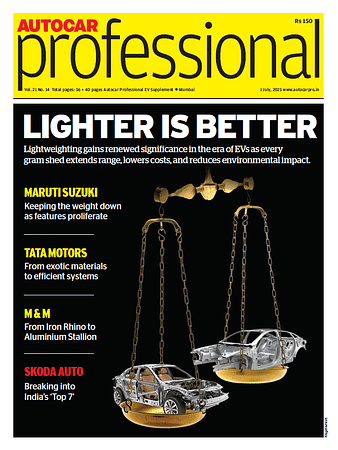Financing remains a challenge for electric mobility in India: CII report
The report in partnership with OMI, is among a series of reports on Roadmap for Future Mobility 2030.
With vehicle financing remaining a challenge for electric mobility in the country, it is important that options are presented to bring electric vehicles on par with the cost of ICE models, as per a CII report.
The report in partnership with OMI, is among a series of reports on Roadmap for Future Mobility 2030.
The report said that in order to get the benefits of mobility as a service (Maas), clarity on issues like bike taxis and the classification of bikes as commercial vehicles are required.
The report also suggested that the benefits of bike taxis be highlighted in terms of decongestion, and user affordability, offering them more choices.
It also calls for introduction of a scrappage policy that builds upon the need to remove end-of-life vehicles (ELVs).
"This scheme will help create an additional benefit for those commercial vehicles seeking to move towards electric vehicle adoption.
"Apart from the scrap value and the incentive currently given, an additional incentive over and above for the driver partners, particularly those who seek to make the transition will help to reduce the principal amount on the new vehicle and thus bring down the interest quantum to be paid out by the vehicle partner," as per the report.
It has also recommended creating a 'first loss fund' mechanism to support increased lending for electric vehicle purchases.
First loss refers to a type of funding arrangement wherein a capital provider allocates to a separately managed account traded by the manager. The manager is required to provide investment capital of 10-20 percent of the total managed account, which is usually matched by the first loss capital provider.
In this type of arrangement, the manager receives an elevated performance fee of 45-80 percent of trading profits, with the higher percentage payouts often attracting a management fee accruing to the first loss capital provider, with the understanding that the fund manager absorbs the first losses, should these occur.
RELATED ARTICLES
MG Says Not Immune to Rare Earth Disruption
Managing Director says Chinese connection with SAIC Motor provides no preferential access to critical materials needed f...
Gabriel India to Invest Rs 27 Crore in Fasteners Joint Venture with South Korean Firm
Company will hold 51% stake in Jinhap Automotive India Private Limited to manufacture automotive and industrial fastener...
Volkswagen India Partners with Cricketer Jasprit Bumrah for Golf GTI Campaign
Strategic collaboration announced to promote performance characteristics of iconic sports car model.





 By Autocar Professional Bureau
By Autocar Professional Bureau
 19 Jul 2023
19 Jul 2023
 2303 Views
2303 Views





 Prerna Lidhoo
Prerna Lidhoo


 Shruti Shiraguppi
Shruti Shiraguppi


